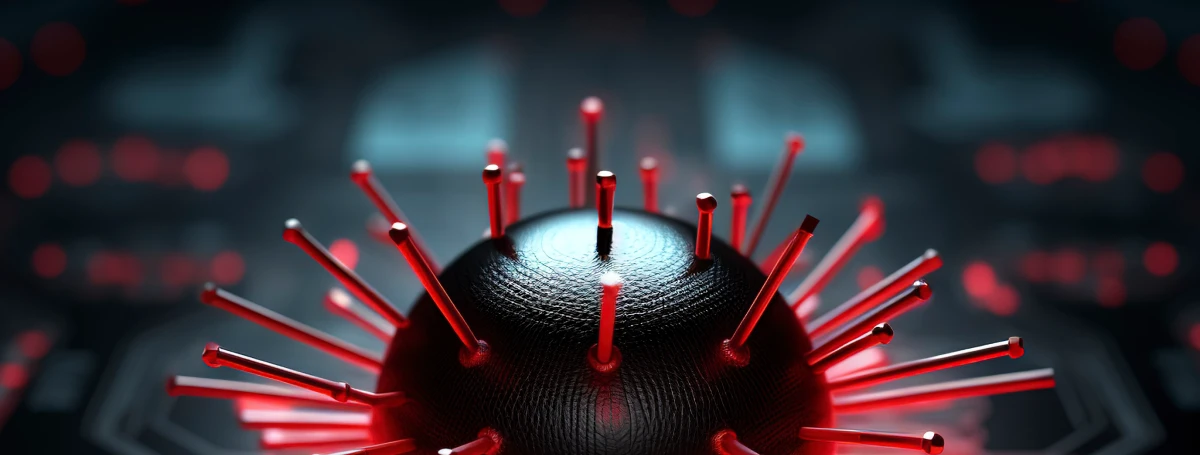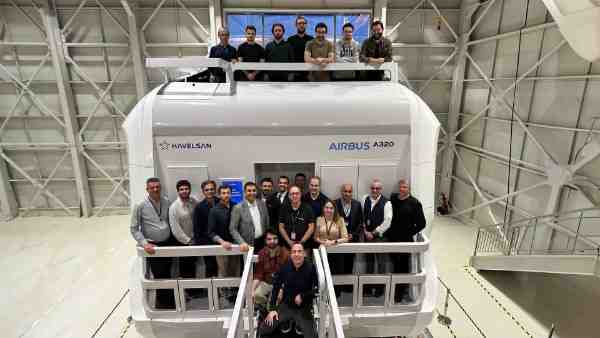Table of Contents
ToggleCryptography at Risk
The bedrock of our secure communications, financial transactions, and military operations—cryptographic systems like RSA and elliptic curve cryptography (ECC)—are under siege by Google’s recent strides with its 105-qubit Willow chip.
These tests illuminate a path toward scalable, fault-tolerant quantum machines, heralding a new era where the very fabric of our digital security could unravel.
Quantum computers, once sufficiently advanced, wield the power to shatter these encryption methods with algorithms like Shor’s, rendering our most sensitive data vulnerable. The widespread policy of “harvest now, decrypt later” attacks looms large, where encrypted data is pilfered today, only to be decrypted when quantum capabilities mature. This necessitates an urgent pivot to quantum-resistant cryptography.
Cybersecurity Challenges
Quantum computing is a double-edged sword in cybersecurity. It can enhance the ability of a national security apparatus to detect vulnerabilities and simulate threats, but it also amplifies the sophistication of potential, adversarial cyberattacks.
Adversarial nations or groups with access to advanced quantum systems could exploit these capabilities to compromise critical infrastructure or disrupt military operations, creating a landscape where the defender’s advantage is entirely eroded.
Military and Intelligence Implications
Quantum computing promises to revolutionize military operations and intelligence services:
- Enhanced Intelligence Analysis: Quantum systems can process vast amounts of data at unparalleled speeds, enabling superior pattern recognition, anomaly detection, and decryption capabilities.
- Operational Optimization: Military logistics, mission planning, and trajectory simulations could be transformed by quantum algorithms, offering unprecedented efficiency and strategic foresight.
- Space Defense: Quantum technologies could bolster satellite communications security and enhance space-based defense systems, ensuring the integrity of our space assets.
These benefits, however, come with a caveat. Nations that lag in quantum advancements risk strategic disadvantages in the global arms race for technological superiority.
Preparing for the Quantum Era: Strategies to Protect National Secrets
To navigate the quantum frontier, governments and organizations must adopt a multifaceted approach. Here’s a comprehensive roadmap, from the most realistic and currently viable strategies to those that remain theoretical or under development:
Currently Viable Approaches
Post-Quantum Cryptography (PQC): Transitioning toward PQC is the most immediate step to safeguard data. Algorithms like CRYSTALS-Kyber (encryption) and CRYSTALS-Dilithium (digital signatures), which were recently standardized by NIST, are designed to resist quantum attacks. Governments should immediately mandate the integration of PQC into all critical systems while phasing out vulnerable algorithms like RSA and ECC.
Hybrid Cryptographic Systems: Employ hybrid models that combine classical encryption (e.g., AES) with PQC algorithms during the transition period. This ensures backward compatibility while enhancing security, providing a bridge to a quantum-safe future.
Symmetric Key Cryptography: Increasing key sizes for symmetric encryption methods like AES (e.g., moving from 128-bit keys to 256-bit keys) to resist brute-force attacks by quantum computers. This leverages the inherent strength of symmetric encryption while adapting to the quantum threat.
Data Lifecycle Management: Encrypt sensitive data using quantum-safe algorithms immediately to protect against future decryption attempts by adversaries equipped with quantum technology. This proactive measure ensures that even if data is stolen today, it remains secure against future quantum decryption.
Emerging but Limited Approaches
Quantum Key Distribution (QKD): QKD leverages the principles of quantum mechanics to enable secure key exchange. While promising, its current limitations include high costs, distance constraints, and reliance on specialized hardware. Combining QKD with PQC could provide an additional layer of security where feasible, offering a glimpse into a future where quantum communication is the norm.
Quantum-Resistant Hardware: Develop hardware optimized for implementing PQC algorithms efficiently at scale. This includes designing chips capable of handling complex computations required by lattice-based or hash-based cryptography, ensuring that our infrastructure can keep pace with quantum advancements.
Theoretical or Long-Term Approaches
Quantum Repeaters for Long-Distance QKD: Overcoming distance limitations in QKD requires advancements in quantum repeaters. While research is ongoing, practical deployment remains years away, a testament to the challenges of quantum communication over long distances.
Quantum Communication Networks: Large-scale quantum networks (e.g., Europe’s EuroQCI initiative) aim to enable end-to-end quantum-safe communication. These networks are still in their infancy but represent a long-term vision for secure communications infrastructure, where quantum entanglement ensures the security of our most critical data.
Fault-Tolerant Quantum Computing: In the distant future, error-corrected quantum systems could enable secure quantum operations directly on sensitive data. However, this remains speculative due to current technological challenges, a horizon where quantum computers themselves become the guardians of our secrets.
Novel Quantum Algorithms: Research into new cryptographic protocols leveraging quantum mechanics could eventually provide innovative solutions for secure communication and data protection. These algorithms might redefine the very nature of security in a quantum world.
The Global Quantum Arms Race
Google’s achievements underscore the intensifying global competition in quantum computing. China and the United States are investing billions into quantum research as part of their national security strategies. The U.S., for instance, has launched initiatives like the National Quantum Initiative Act to accelerate research, fostering a collaborative environment between government, academia, and industry, while China has demonstrated significant progress in QKD networks and satellite-based quantum communication systems, showcasing its commitment to quantum supremacy on the battlefield, and beyond.
These developments highlight the need for international collaboration alongside domestic innovation. Governments therefore should balance competition with cooperation to establish global standards for quantum-safe technologies while preventing misuse by malicious actors.
Next Steps
Formidable challenges for national security, and the military in particular are only one part of Google’s advancements in quantum computing. We’re approaching an era where classical cryptographic systems may no longer suffice.
Proactive measures are essential to safeguard sensitive information and maintain strategic superiority.
The transition to post-quantum cryptography is not just a technical necessity—it is a matter of national security urgency. Governments must act decisively by investing in research, fostering public-private partnerships, and preparing their infrastructure for a future shaped by quantum technology.
In this race against time, those who adapt quickly will not only protect their secrets but also gain a critical edge in defining the geopolitical landscape of tomorrow’s quantum-powered world. The complexity and variability of our response must mirror the perplexity and burstiness of the quantum challenge itself, ensuring that our defenses are as dynamic and resilient as the threats we face.
60 Second Bio:
Lars G. A. Hilse (*1979) is an independent political/corporate advisor and expert witness in information security with a focus on the risks of cyber terrorism and warfare, and their impact on national security of critical infrastructure; with degrees in engineering and finance.
He maintains close cooperation with law enforcement and the intelligence community and actively contributes to some of the most difficult, and notable, cybercrime investigations. He acts as a Cyber Crisis Manager, and through his vast network, can deploy highly specialised cyber incident response teams at breathtaking speed across the globe.
In his capacity as an Information Security Consultant, he performs state-of-the-art risk assessments, mitigation directives, crisis response protocols, and establishes cyber security maturity models.
Among his other talents are intelligence gathering, accessing fortified infrastructure/networks, forensics, all with a focus on social engineering and other unorthodox access methods.
Since his first exposure to the internet at age 13, Hilse has constantly broadened his skillset in cybersecurity, focusing on cyber-crime, cyber terrorism, and cyber defence.
Due to his precise foresight of all developments in the digital realm for over 25 years, he is repeatedly referred to as a global thought leader in cyber security and digital strategy. Hilse has privately funded research in cybersecurity worth over USD $1.000.000 since 2011. Some of the results hereof were the Advanced Cybersecurity Risk Assessment Checklist (ACRAC), and the advancement of several information security maturity models, and numerous papers and books.
He acts as a political/military/intelligence/police advisor among others to the European Parliament. He proposes highly individualized, complex, multi-phase approaches in which a threat landscape is established. The Risk Mitigation Projects resulting thereof, along with a (legislative) framework, will reduce the potential fallout of cyberattacks on national stability, and national security.

Lars Hilse
Lars G. A. Hilse is an independent political/corporate advisor, and expert/witness in information security with a focus on the risks of cyber terrorism, and cyber warfare, and their impact on the security of critical, national/global infrastructurewith degrees in electrical engineering, and finance.
He maintains close cooperations withmilitary, law enforcement, and the intelligence community, and actively contributes to some of the most difficult, and notable cybercrime investigations.
He acts as a cyber-crisis-manager, and through his vast network is able to deploy highly specialised cyber-incident-response teams globally at breathtaking speeds.
In his capacity as an information security consultant he performs state-of-the-art risk assessments & mitigation directives, crisis response protocols, and establishes cyber security maturity models.
Among his other talents are intelligence gathering, accessing fortified infrastructure/networks, forensics, all with a focus on social engineering and other unorthodox access methods.
Since his first exposure to the internet at age 13, Hilse has constantly broadened his skillset in cybersecurity, focussing on cyber crime, cyber terrorism, and cyber defence.
Due to his precise foresight of all developments in the digital realm for over 25 years, he is repeatedly referred to as a global thought leader in cyber security, and digital strategy.
Hilse has privately funded research in cybersecurity worth over USD $1.000.000 since 2011. Some of the results hereof were the Advanced Cybersecurity Risk Assessment Checklist (ACRAC), and the advancement of several information security maturity models, and numerous papers and books (see below).
He acts as a political advisor among others to the European Parliament, proposing highly individualised, complex, multi-phase approaches in which a threat-landscape is established, risks identified thereien are mitigated, after which a (legislative) framework will reduce the potential fallout of cyberattacks.













